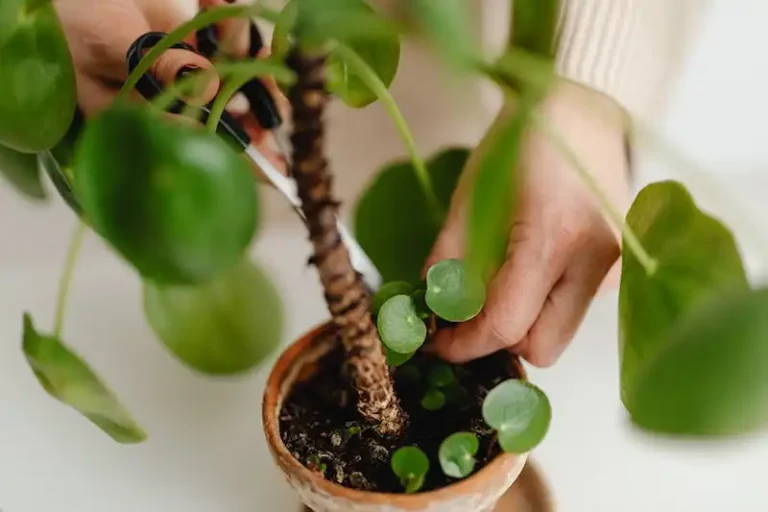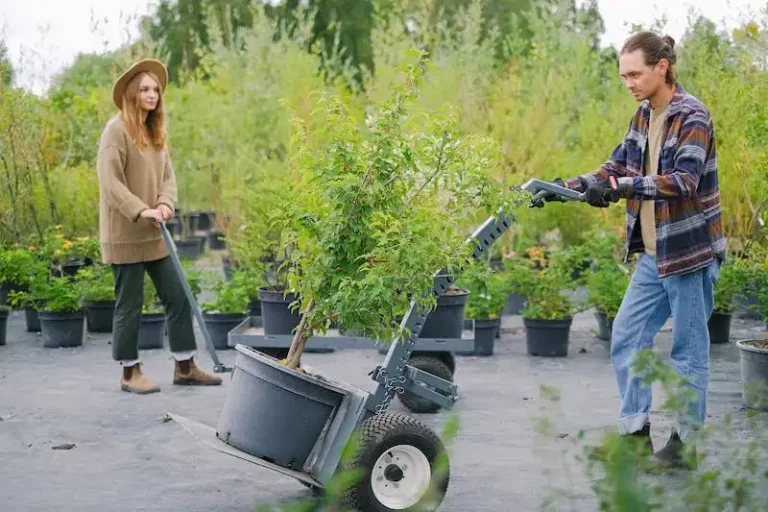If you’ve noticed tiny, flying insects on your houseplants, chances are you have a thrips infestation. These pesky pests can quickly multiply and cause havoc on your beloved greenery. But don’t worry, there are several effective methods to get rid of them!
One of the simplest ways to kill thrips is by using sticky traps. These traps are coated with a sticky substance that thrips get stuck to when they come in contact with it. Another method is using insecticidal soap. This soap can be directly sprayed on the adult thrips, killing them within minutes.
When dealing with larval thrips or a large group of adult ones, it’s best to use a specific thrips spray. These sprays are designed to target and kill thrips on contact. Just make sure to follow the instructions on the label carefully, as different sprays may have specific application methods and durations.
An alternative natural method is to introduce beneficial insects into your home, such as ladybugs or predatory mites. These insects feed on thrips and can help prevent infestations. However, be careful when using insecticides, as they can harm these beneficial insects.
Regularly inspect your houseplants for any signs of thrips, like light-colored spots on leaves or black droppings. If you spot any thrips, take immediate action to prevent them from spreading to other plants. Additionally, practicing good plant care, such as keeping your plants well-watered and regularly dusting off leaves, can help prevent thrips from infesting your plants in the first place.
So, if you want to keep your houseplants thrips-free, be vigilant and take action at the earliest signs of infestation. With the right techniques and products, you’ll be able to eliminate thrips and ensure your plants stay healthy and thriving!
How to Get Rid of Thrips on Houseplants
Thrips can wreak havoc on your houseplants, causing damage to leaves and petals. These tiny, slender insects are usually smaller than 1mm in length, making them difficult to spot. However, there are several effective methods for getting rid of thrips on houseplants.
1. Soap and water: One effective method is to mix a mild liquid soap with water and spray it directly onto the affected plants. This will suffocate the thrips and prevent them from laying eggs. Repeat this application every few days until the thrips are gone.
2. Neem oil: Neem oil is a natural insecticide that is effective against thrips and other plant-feeding insects. Mix neem oil with water according to the instructions on the bottle, and spray it onto the affected plants. Neem oil can also help to reduce the spread of pathogens caused by thrips. Apply neem oil regularly to keep thrips under control.
3. Introduce natural predators: In gardening, it is often a good idea to introduce predatory bugs that feed on thrips, like ladybugs or lacewings. These bugs can help to manage thrips populations by eating them. If you choose to introduce natural predators, make sure to closely monitor the situation to ensure that the predators are not causing any problems for your plants.
4. Isolate infested plants: If you have multiple houseplants, it is important to isolate any plants that are infested with thrips. By doing so, you can prevent the spread of thrips to nearby plants. Keep infested plants away from other plants until they are thrip-free.
5. Keep plants healthy: Thrips are more likely to attack plants that are stressed or weakened. To reduce the chances of a thrip infestation, make sure to provide your plants with proper care and maintenance. This includes regular watering, fertilizing, and keeping a consistent temperature and humidity level.
Overall, getting rid of thrips on houseplants can be a challenging task, especially since these insects are so small and difficult to spot. However, by regularly monitoring your plants and taking appropriate action when needed, you can effectively manage thrip populations and keep your houseplants healthy and thriving.
What are thrips and why are they harmful to houseplants
Thrips are small, slender insects that are known for their ability to cause damage to houseplants. These pests are often found in houseplant crevices or around the base of plant stems. Thrips can be identified by their elongated bodies and fringed wings.
Thrips feed by piercing the surface of leaves and sucking out the plant’s juices. This feeding method can result in discoloration and distortion of the leaves. Additionally, thrips can transmit plant diseases, causing even further harm to houseplants.
One of the most common signs of a thrip infestation is the presence of silver or bronzed stippling on the leaves. Other signs of a thrip infestation include wilting leaves, black fecal matter, or tiny crawling insects on the plant.
Thrips can quickly multiply and spread throughout a houseplant collection, so it’s important to take action at the first sign of an infestation. There are several methods for getting rid of thrips, including flushing the soil, introducing predatory insects, or spraying insecticidal soaps.
Unfortunately, thrips are becoming increasingly resistant to pesticides, making them difficult to control. In order to effectively get rid of thrips, it’s important to use a combination of methods and be persistent.
If you’ve read up on thrips and are in search of natural ways to eliminate them, you may be wondering what natural insecticidal options are available. Some houseplant enthusiasts have found success with neem oil or a mixture of water and dish soap as a spray. These natural remedies can be effective in controlling thrips, but it’s important to use caution and follow instructions carefully to avoid any adverse effects on the plants.
In order to prevent thrip infestations in the first place, it’s a good idea to inspect new plants before bringing them indoors. Inspect the undersides of leaves and the stems for any signs of thrips or other pests. Quarantine new plants for a few weeks to ensure that they are pest-free before placing them alongside your existing houseplant collection.
Overall, thrips can be a major nuisance for houseplant owners. These pests can cause serious damage to plants and can be difficult to control. By being proactive, monitoring plants for signs of an infestation, and taking appropriate action, you can keep your houseplants healthy and free from thrips.
What do thrips look like
Thrips, also called thunderflies or thunderbugs, are tiny insects that can cause significant damage to houseplants. They are usually less than 1/16 inch in length and have slender bodies. Thrips vary in color depending on the species, but they are often yellowish or black. Their bodies are elongated and their wings are fringed with long hairs.
Identifying thrips on houseplants can be challenging due to their small size. However, closely inspecting the plant’s surface can help you spot these pests. One method of inspection is to gently shake the plant over a sheet of white paper or a flint surface and see if any tiny insects fall off. Another way is to use a magnifying glass to examine the leaves closely and look for signs of stippled or discolored areas.
Thrips are primarily feeding on plant sap, which can cause leaves to become discolored and damaged. If you’ve noticed that your houseplants have small, silvery or bronze patches on the leaves, it’s likely that thrips are the culprits. Additionally, thrips can leave behind black fecal excrement, which may be visible on the leaves or plant surface.
Thrips are known to increase their population rapidly and can quickly wreak havoc on your plants if left uncontrolled. There are a few methods you can use to get rid of thrips. One effective approach is using yellow or blue sticky traps, which can attract and capture adult thrips. Another option is introducing natural predators like ladybugs or predatory mites to feed on the thrips. You can also create a physical barrier by covering your plants with a fine mesh netting to prevent thrips from crawling onto them.
If these methods don’t effectively reduce the thrip population, you might consider using insecticidal soaps or oils. These products can kill both adult thrips and their larval stages. Be sure to follow the instructions on the product label and apply it onto the leaves, making sure to cover all surfaces for maximum effectiveness.
It’s important to note that thrips can also transmit plant pathogens and viruses, so it’s crucial to take action promptly if you notice signs of infestation. If your houseplants are heavily infested or if you’re unsure how to deal with thrips, it’s recommended to consult a professional pest control service. They have access to more potent chemical treatments and can provide expert advice on eradication methods.
How do they harm your plant
Thrips can be a major nuisance for houseplants, causing damage to the leaves and potentially spreading harmful viruses. These tiny insects, commonly referred to as thrips, are usually publ yellowish or black in color and can be difficult to spot due to their small size.
Thrips crawl actively on the leaves and can be quite annoying for your plants. They feed by puncturing the surface of the leaves and sucking out the plant juices. This feeding application can lead to yellowing, silvering, or bronzing of the leaves. In some cases, the damage caused by thrips can be severe, resulting in distorted or deformed growth.
If you suspect that your plants may be infested with thrips, it is important to take action to prevent their spread. Thrips can reproduce quickly and introduce more bugs to your plants. One way to manage thrips is through natural pest control methods such as neem oil. Neem oil can be applied topically to the infested areas of your plant, suffocating and killing the thrips.
When identifying thrips, closely inspect your plants for small, slender insects crawling on the leaves. Look for signs of damage like silvering or bronzing of the leaves, distorted growth, or tiny black dots on the undersides of leaves, which are thrip feces. Thrips are most active during the warmer months, but they can still be present and harmful to your plants during the winter.
To treat thrips, you can prune and remove heavily infested leaves and follow up with a spray application of neem oil or other organic insecticides. Be sure to thoroughly cover all plant surfaces, including the undersides of leaves. Repeat the application as needed to manage the thrip infestation.
It is worth noting that thrips can be quite resilient, and their removal can be challenging. Sometimes, thrips can develop resistance to certain insecticides, so it may be necessary to rotate the type of treatments you use.
In conclusion, if you suspect thrips are harming your houseplants, it is important to take action and manage the infestation. Identify the signs of thrips and follow the necessary steps for treatment. Implement preventive measures to avoid introducing thrips to your plants, and regularly inspect your plants for any signs of a thrip infestation. With proper care and attention, you can protect your plants from the damaging effects of thrips.

